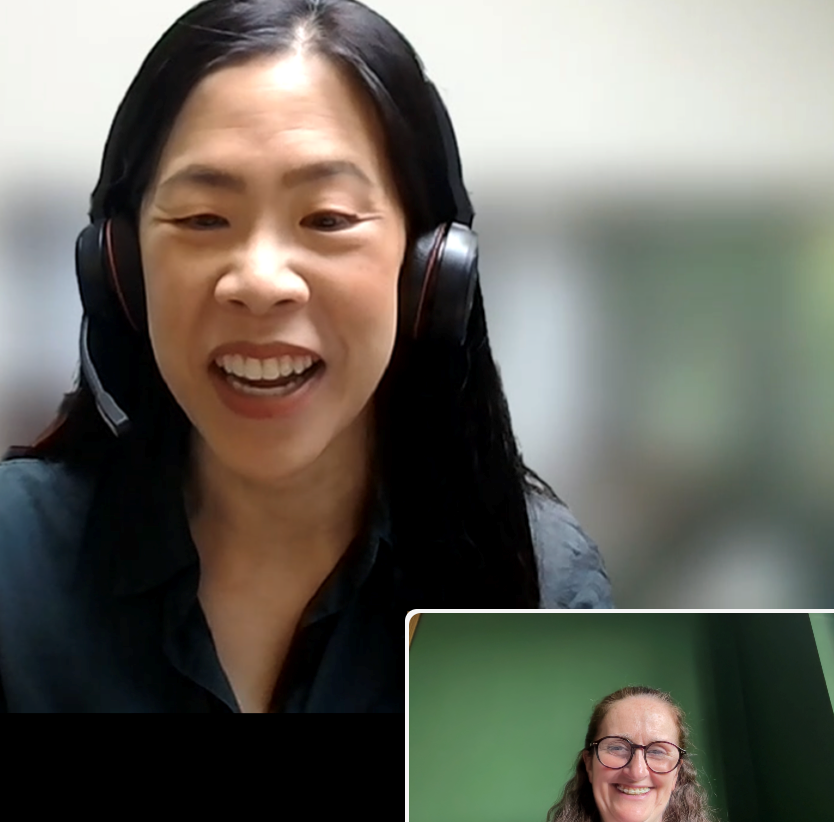By Dr Stephanie Jones
On 1st April I caught up with Dr Sue Lim in the latest in my series of “Conversations with Leaders in our Industry”. Dr Lim is an experienced former FDA director and licensed physician with around 2 decades of global drug development experience. She is now an independent consultant helping her clients navigate the FDA drug and biological product approval process. It was great to catch up with Sue, and we covered a whole range of topics, which I’ve summarised below…
RIF: Impact on FDA
Although it was great to catch up with Sue, that day brought bad news for many of her former colleagues in FDA as the “Reduction in Force” had begun, and a round of lay-offs had just happened that morning. Obviously that was the first topic of discussion, and we pondered on the future, as FDA is viewed as a world leading regulator. What will the impact be on the quality of regulatory scrutiny? We didn’t have the answers but are watching this space.

Project Optimus
This is an initiative from the FDA Oncology Center of Excellence (OCE) to reform the dose optimization and dose selection paradigm in oncology drug development. This has been in planning for several years, with Project Optimus launched in 2021 and finally last year the final guidance was published. We touched on feedback from our clients, that Sponsors of clinical trials have been feeling the effects of this but also that hopefully earlier and expanded dose finding efforts will help prevent efficacious drugs from being shelved due to preventable toxicity or inadequate dosing strategies. It’s hoped that the goals of Project Optimus will also increase the likelihood of overall pivotal trial success, making these treatments available to patients more quickly.
Challenges of developing new oncology products
The discussion on Project Optimus triggered our thinking around the challenges of developing new products to treat cancer. In oncology, placebo-controlled trials are uncommon, as it is unethical to leave anyone without the gold standard treatment. This means most studies use “add on” designs, where the investigational product is added to the gold standard regime, so that patients in both arms of the study receive the currently accepted treatment. The amount of additional benefit from the new product when compared to the effect when not using it, is called the “Treatment effect”. It is really difficult to distinguish the two arms when they both contain an established treatment, which means a lot of patients need to be involved in multiple clinical trials over several years. In oncology’s rapidly moving environment, promising new drugs are quickly incorporated into treatment guidelines on the basis of positive data, ensuring patients gain rapid access to these advances. This pragmatic approach rightly prioritizes urgent clinical need, which means that repeat or confirmatory studies can be overshadowed by new clinical trials which look to evaluate another new drug with the newly adopted regimen. Robust trial design with rigorous execution are therefore critically important to ensure decision making is being made with strong data. Medical experts guiding the Sponsors of these trials need to think outside the box, considering all the factors, including possible indications and how the product could be positioned against other treatments in this challenging space.
Tailored clinical approach to developing biosimilars is underway
The rules are evolving and we need to keep up! Previously the regulators’ position for most biosimilars was that a comparative efficacy study (CES) between the proposed biosimilar and reference product was needed to address residual uncertainties regarding biosimilarity. However, several key regulators, first with MHRA in 2021 and more recently with EMA in Apr 2025 that biosimilars may be approved without a CES if similar clinical efficacy and safety can be determined from a stringent evaluation of comparative analytical data and a comparative clinical PK trial. There is still an opportunity to comment on the EMA draft reflection paper until 30-Sep-2025. While FDA has not issued guidance, their position, as articulated at various public meetings, is generally consistent with those of MHRA and EMA. These evolved scientific positions have tremendous impact, as it reduces the amount of clinical trial data required, and puts the focus on the other tests that demonstrate similarity. It is hoped this will reduce burden on sponsors, make it quicker for healthcare systems and patients to obtain access to products that are cheaper, while maintaining high standards of quality.
However, for medical experts like ourselves, it means we need to find ingenious ways to “retro-fit” the existing data, generated during the time of the previous guidelines, into a package of evidence to support approval via the new thinking.
2024 eclipse
And finally, Sue mentioned that she had family in Canada who saw the eclipse in full last year, and I revealed that my husband and I are eclipse-chasers. We flew to Washington last year to see some clients, then tagged on a flight to Dallas to watch the eclipse. Sue was working in DC that day, and commented that it was like twilight, everything was very quiet. We both experienced that eery silence, when even the birds stopped singing!
Thanks to Dr Sue Lim for a great conversation, look forward to catching up again soon!